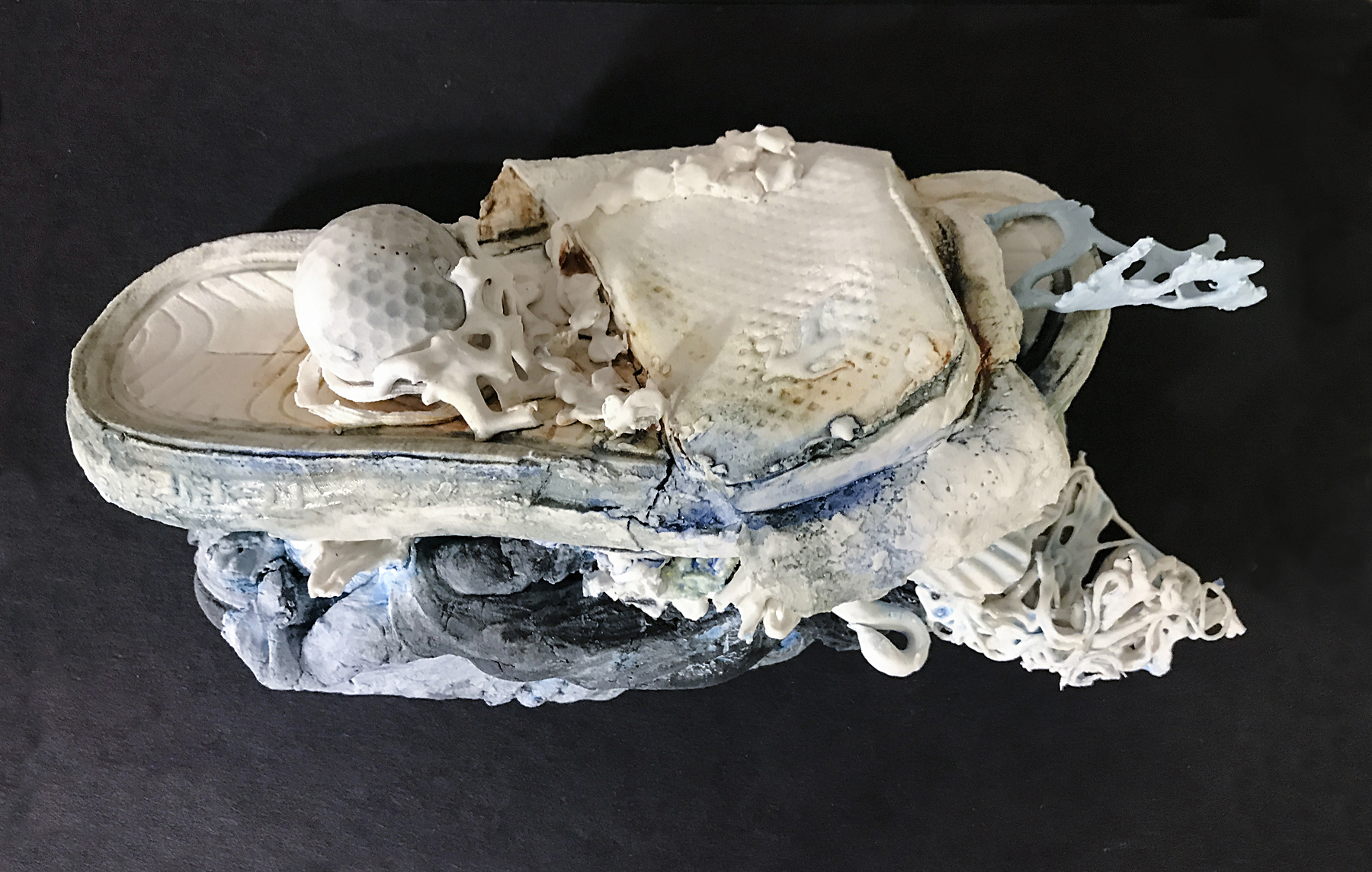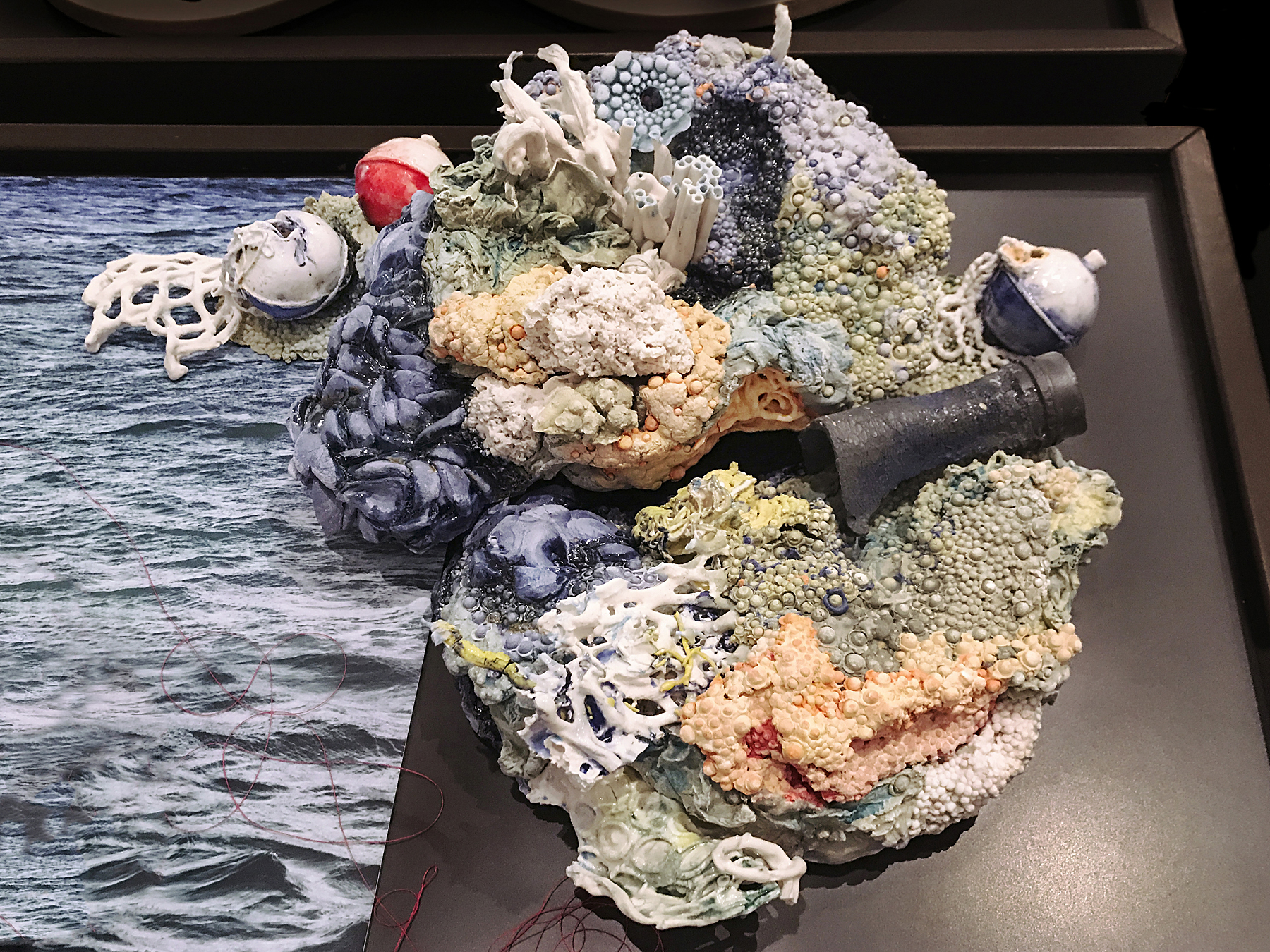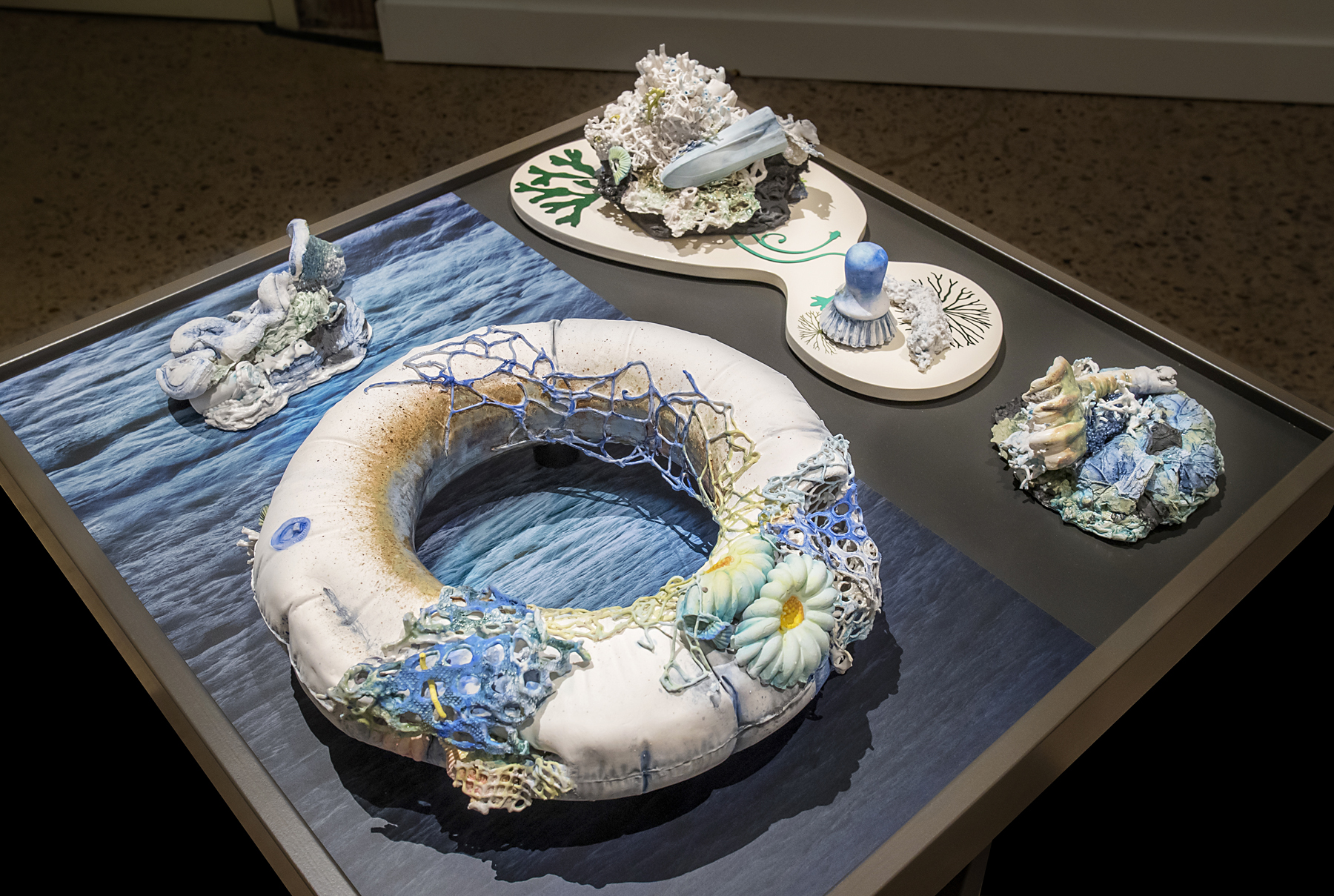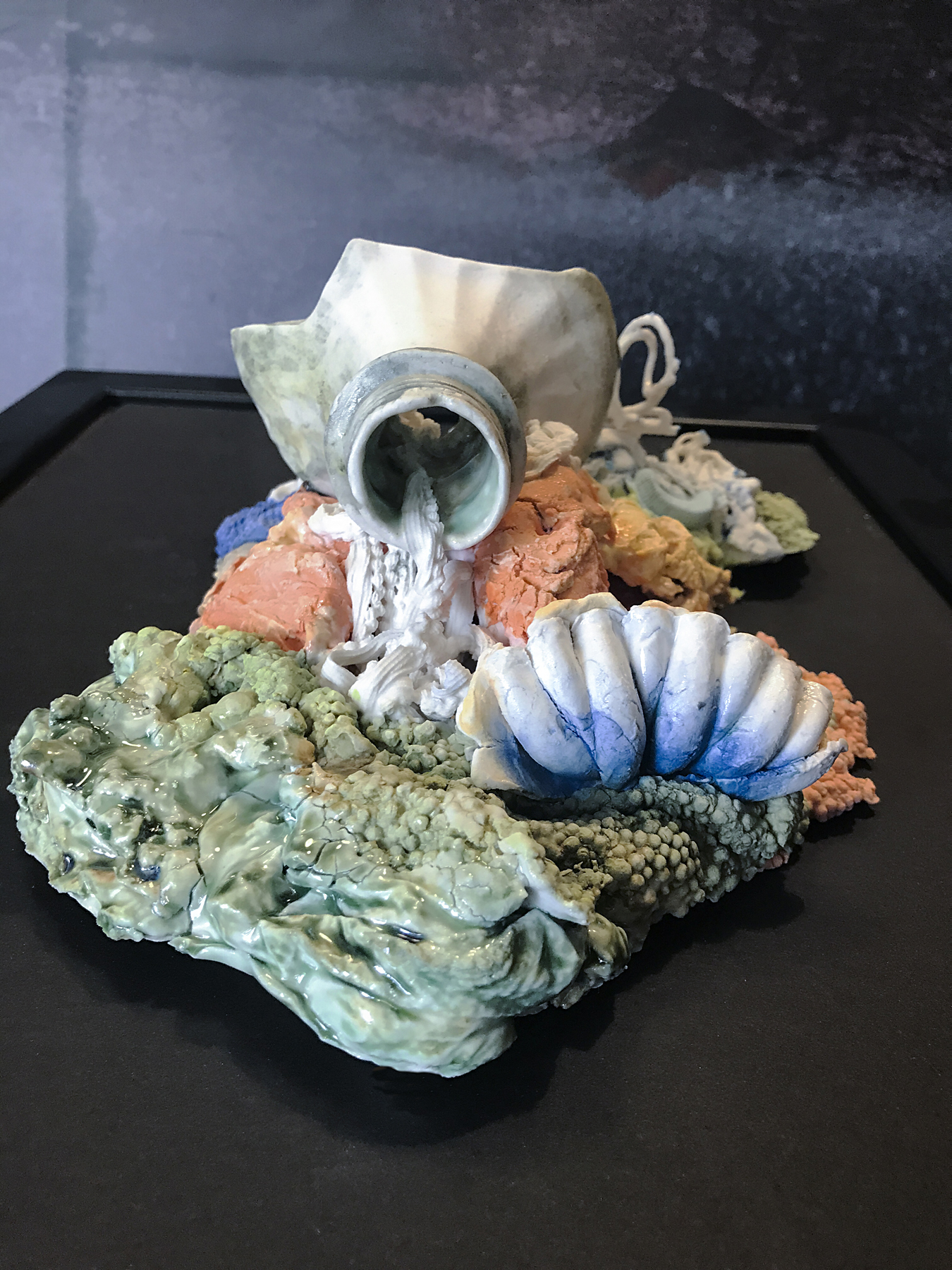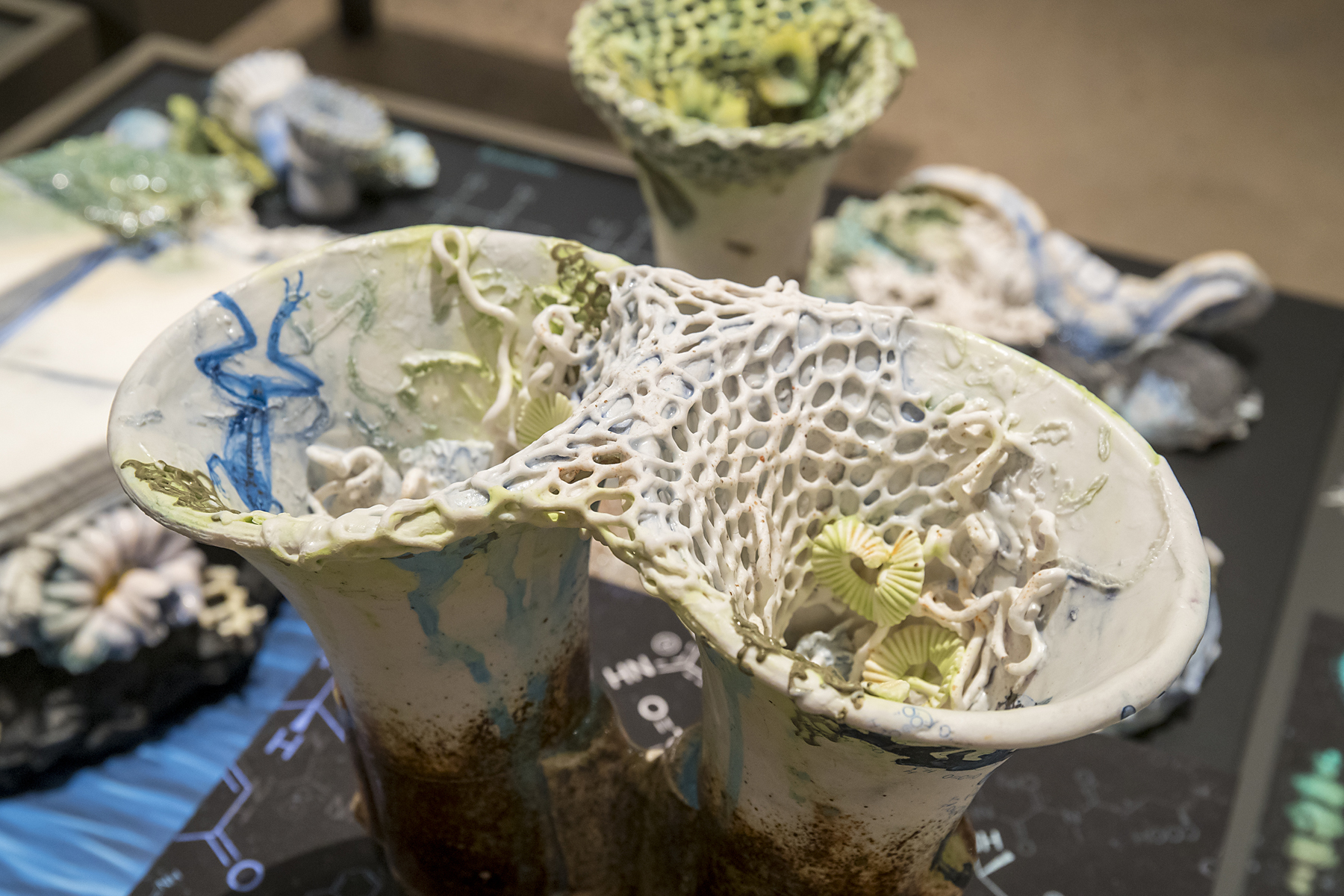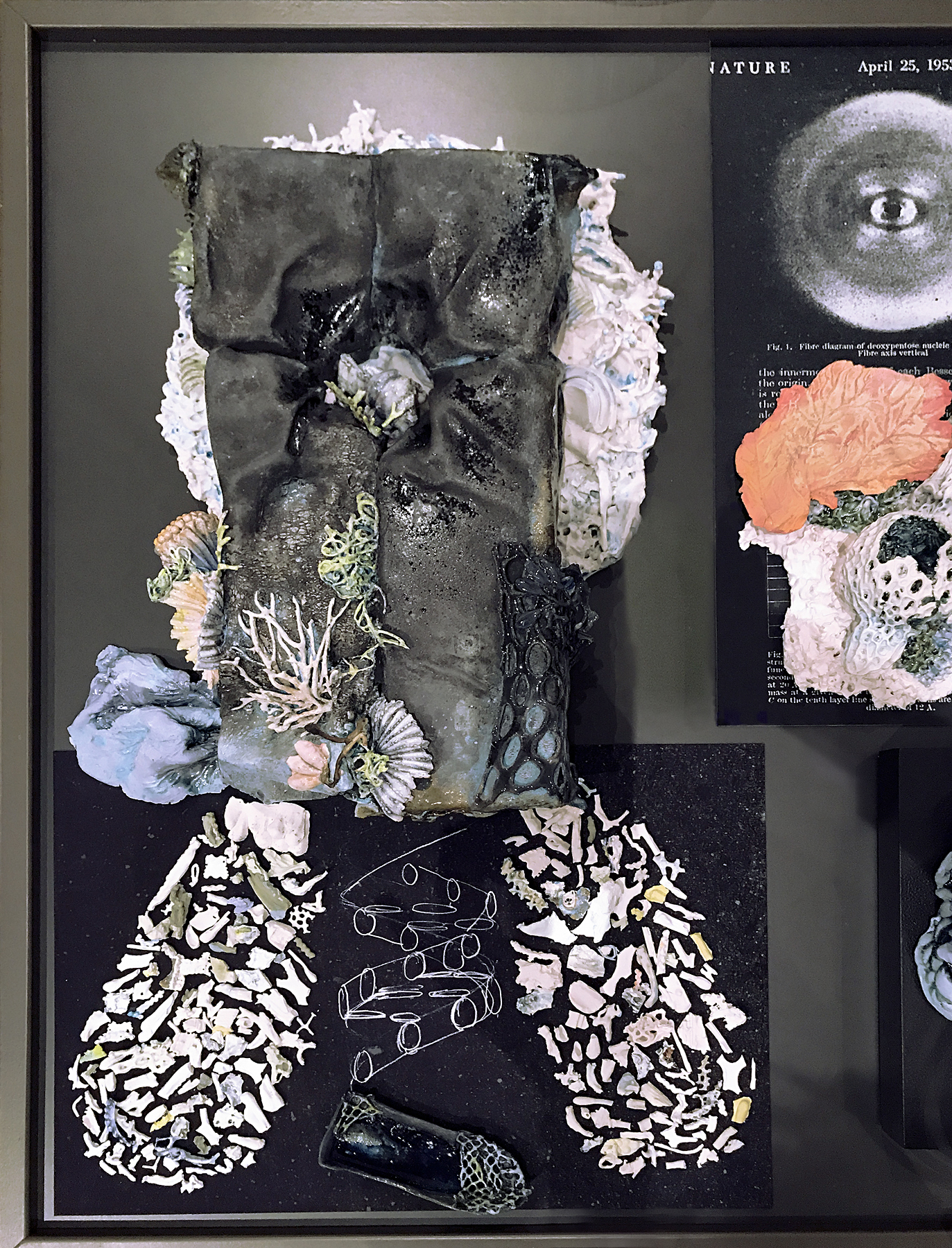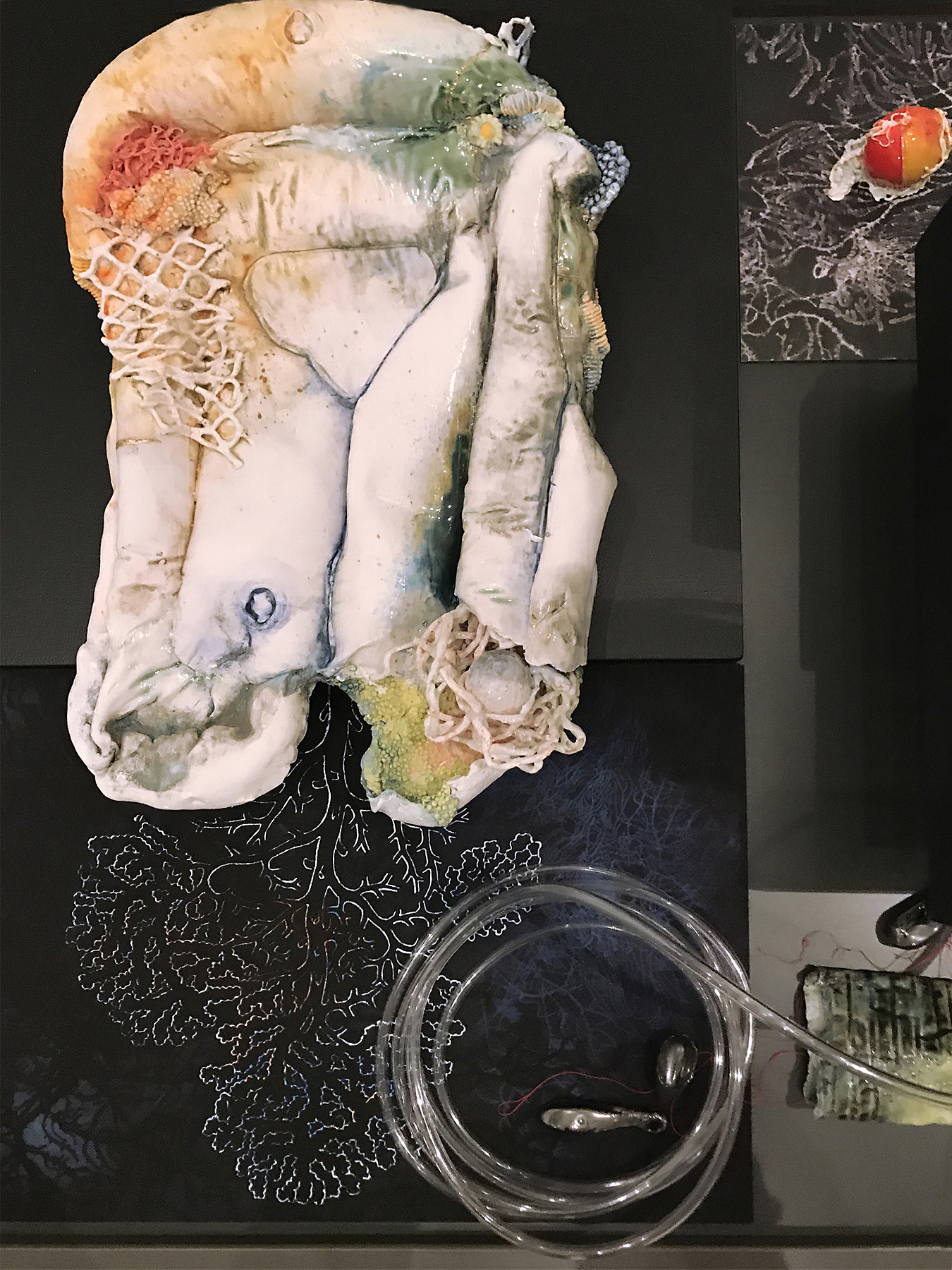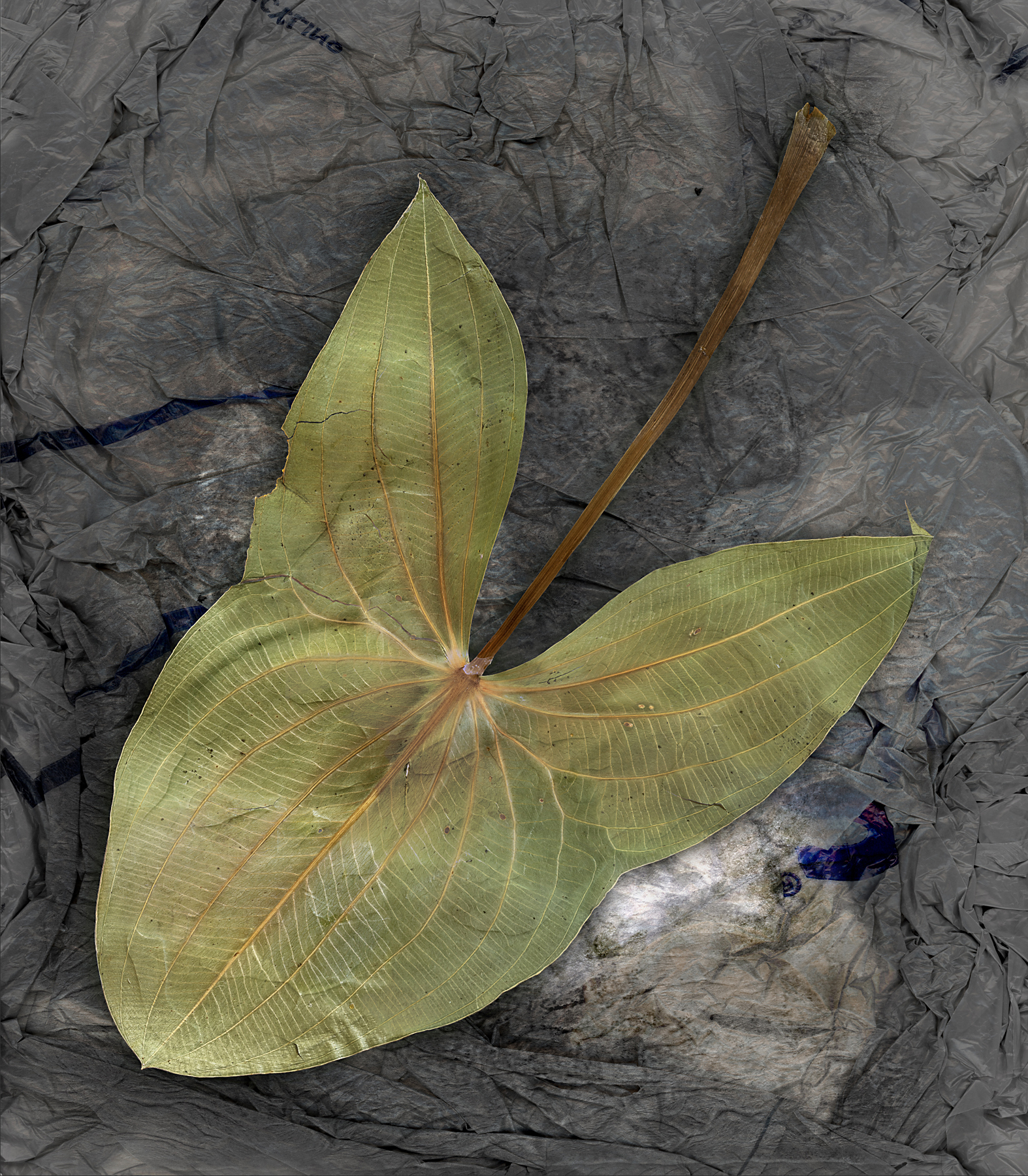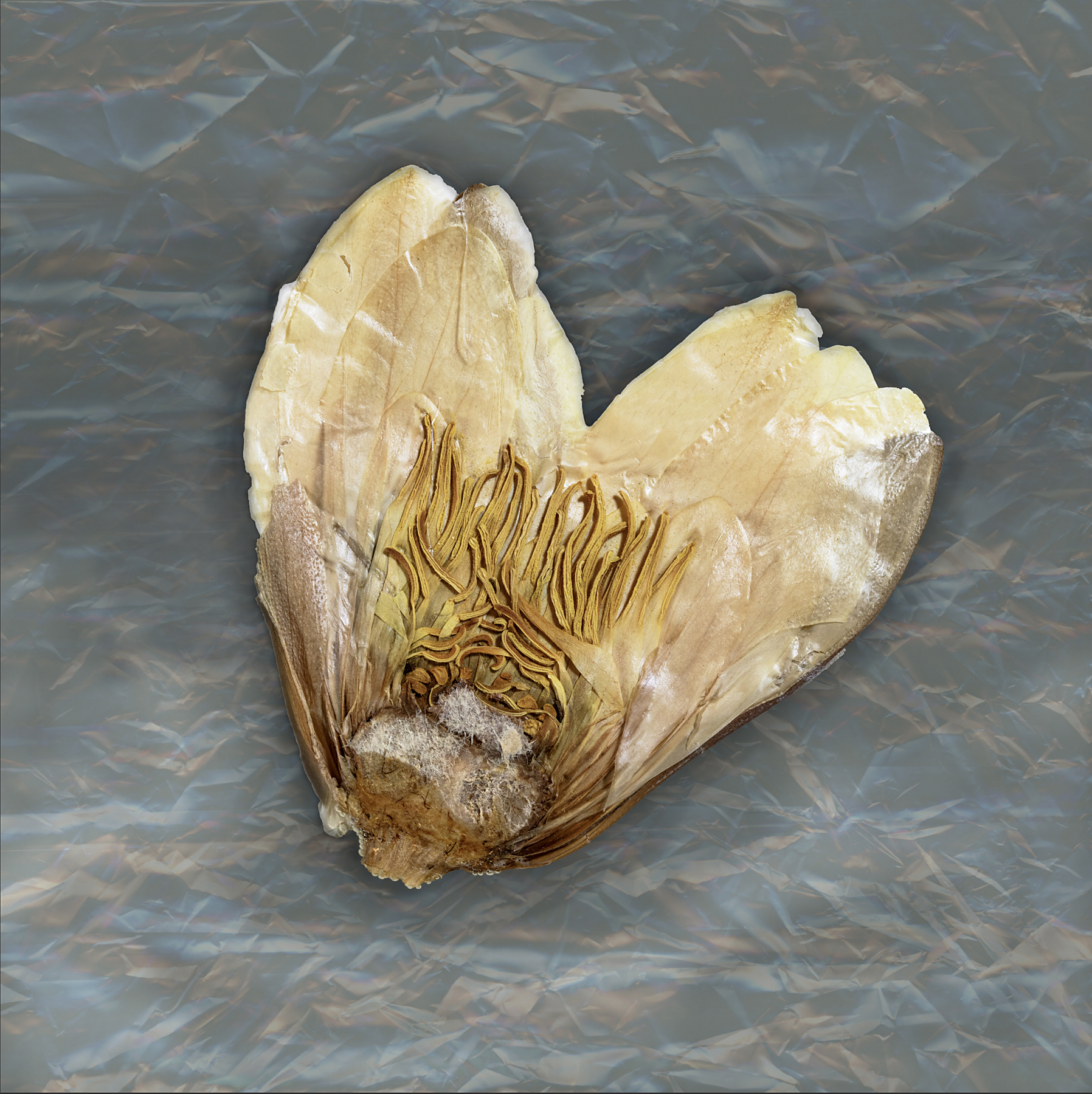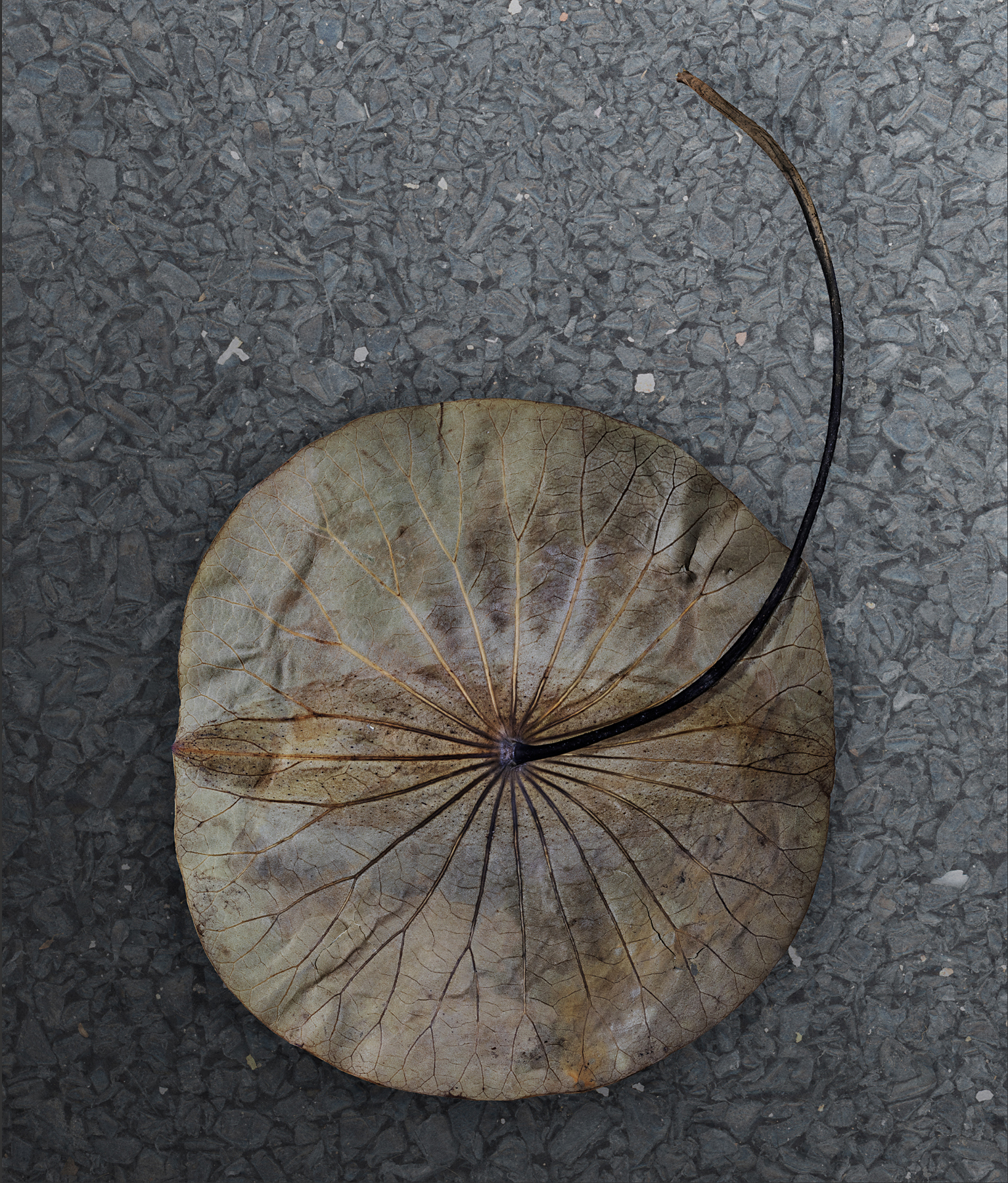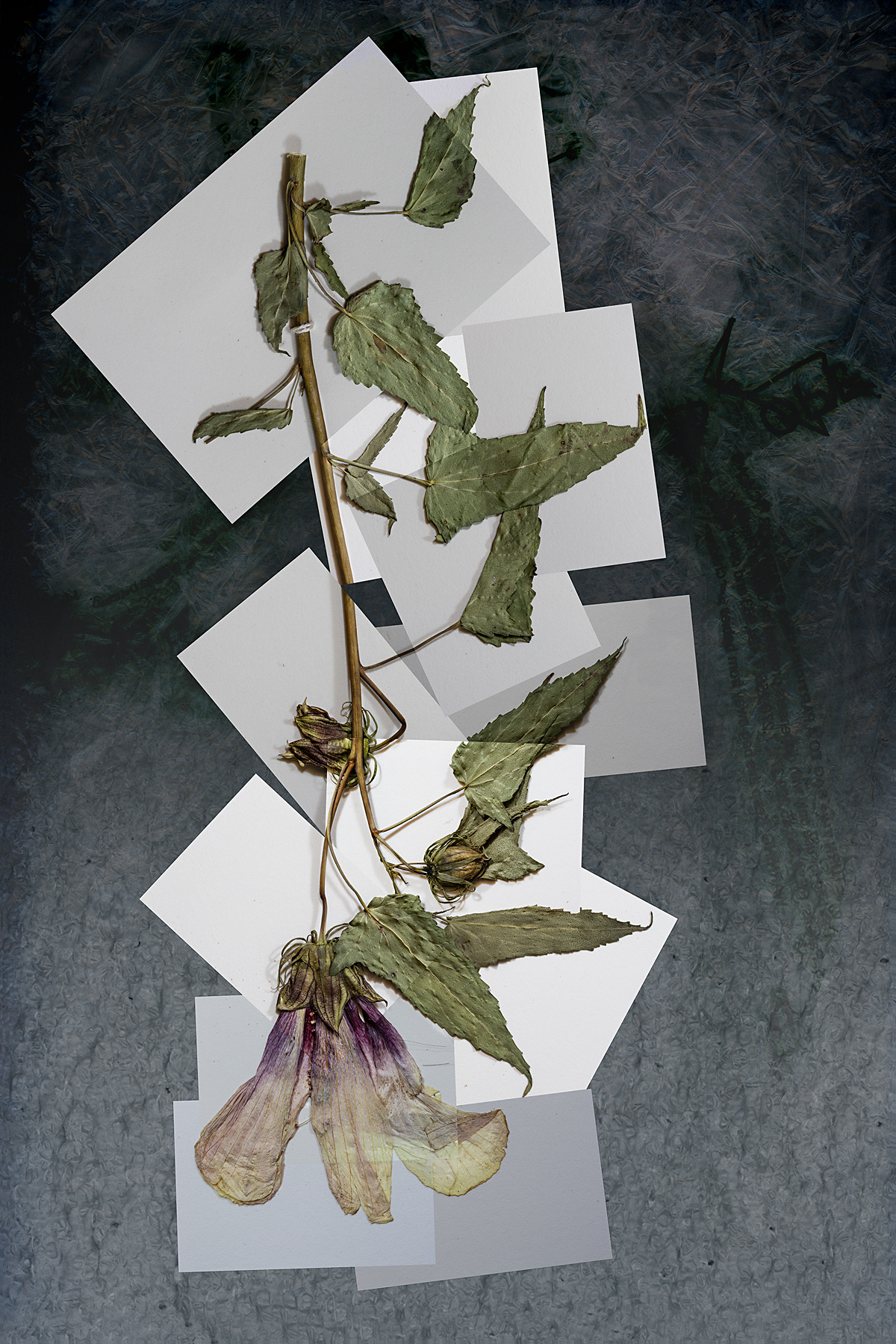Artists statements
Transmutation Still Life—Nature Study Tables
These works are comprised of porcelain slip cast, press molded, and ceramic burnout specimens of anthropogenic debris found along fresh waterways and lakes. In the tradition of a museum study collection, a variety of related objects are placed on low tables, in boxes, and on risers for inspection. The relationship between these objects to each other and the collection as a whole is implied and further suggested by graphic and photo-based images that lay in the recessed table top platforms.
Transmutation is an old word for changing one thing into another. It is often associated with alchemy (lead into gold), but it is also an expression for changing one species into another. The term was replaced in 1872 when Charles Darwin used the word evolution for the first time in his sixth edition of the Origin of Species. Clay (the porcelain used here as the primary medium) also goes through a process of transmutation in the firing process. And notably, in a very real way we are living in an era of transmutation, in part because of politics and the Covid-19 virus, but also because the world around us is changing so fast, giving rise to pandemics and other challenges associated with climate change.
Marguerite Perret and Bruce Scherting
Anthropogenic Benthic Assemblage, 2019-present
porcelain and mixed media
Marguerite Perret and Bruce Scherting
Benthos Inflatable Ring, 2019-present
porcelain and mixed media
Marguerite Perret and Bruce Scherting
Benthos Sports Shoe, 2019-present
porcelain and mixed media
Marguerite Perret and Bruce Scherting
Flood Bottle, 2019-present
porcelain and mixed media
Marguerite Perret and Bruce Scherting
Frog Siren, 2019-present
porcelain and mixed media
Marguerite Perret and Bruce Scherting
Limnetic Black Life Jacket, 2019-present
porcelain and mixed media
Marguerite Perret and Bruce Scherting
Littoral Vest and Lungs, 2019-present
porcelain and mixed media
Hydrophytes: Art Forms in Nature
These composite images are based on photographs of botanical specimens from the University of Kansas Biodiversity Institute McGregor Herbarium. These images represent works in progress.
Hydrophytes are plants that live in water. The species that form the inspiration for this series were photographed at the University of Kansas Biodiversity Institute McGregor Herbarium with a macro lens one small section at a time, and those fragments of images were stitched together to create a large image with fine detail. All of these species are common to Midwestern watersheds and wetlands. The backgrounds are various forms of plastics: ground plastic for recycling, plastic shopping bags, expanded polystyrene foam (EPS), and Ethafoam.
The subtitle Art Forms in Nature refers to the series of photographic studies of plants by Karl Blossfeldt originally titled Urformen der Kunst (Archetypal Forms of Art) when published in 1929. It was later republished under various English language titles including Art Forms in Nature and Art Forms in the Plant World.
Marguerite Perret and Bruce Scherting
Hydrophytes–Alismatacea (water plantain) Leaf with gray Lowe’s shopping bags, 2020
digital collage, 34” x 40”
Marguerite Perret and Bruce Scherting
Hydrophytes–Nymphaea odorata (American white water-lily) with high-density polyethylene sandwich bags, 2020
digital collage, 24” x 24”
Marguerite Perret and Bruce Scherting
Hydrophytes–Nelumbo lutea (yellow lotus) Leaf with black plastic grind, 2020
digital collage, 34" x 40"
Marguerite Perret and Bruce Scherting
Hydrophytes, Swamp Hibiscus (Hibiscus moscheutos) with low-density polyethylene bags and styrofoam, 2020
digital collage, 60" x 40"
Artists bios
Marguerite Perret is a full professor of art at Washburn University, where she teaches design; contemporary art theory; and cross-disciplinary special topic courses blending art, science, and ecology.
Bruce Scherting currently leads Project Art at the Medical Museum at the University of Iowa Hospitals and Clinics. Previously he served as the Director of Exhibits at the University of Kansas Biodiversity Institute and Natural History Museum.
Together, Perret and Scherting develop issue-based art installations that explore complex narratives at the interstices of art, science, healthcare, and human experiences, often in collaboration with other artists, scholars, and through visitor participation. Their projects have featured in exhibitions across the United States and in Europe.

